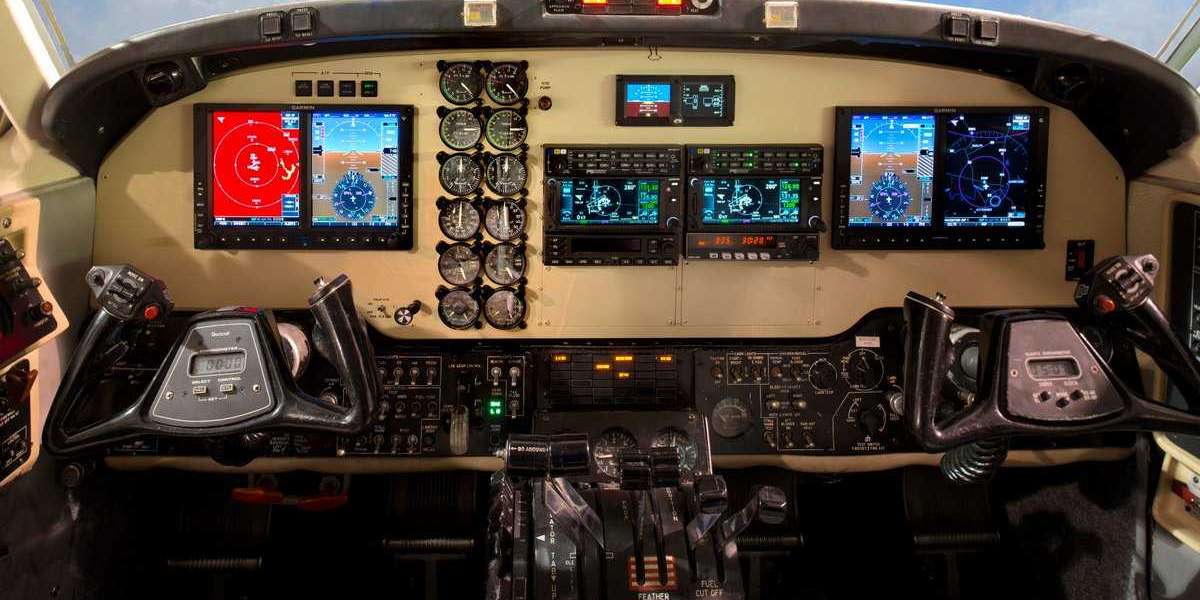Aviation has come a long way since the Wright brothers took flight over a century ago. The rapid advancements in technology have revolutionized the way we travel by air. One of the key factors behind this transformation is the continuous evolution of avionics and electronic components. These intricate systems play a crucial role in ensuring the safety, efficiency, and reliability of aircraft. We delve into the world of avionics and electronic components, exploring the latest innovations that are reshaping the future of aviation.
What is Avionics?
Avionics And Electronic Components, a portmanteau of aviation and electronics, refers to the electronic systems used in aircraft. These systems are responsible for controlling, monitoring, and communicating vital information between various components of the aircraft. Avionics encompass a wide range of technologies, including navigation systems, flight management systems, communication systems, and more.
- Evolution of Avionics
From the early days of aviation, avionics has evolved exponentially. In the early 20th century, avionics primarily consisted of basic mechanical instruments. However, with the advent of electronics, avionics underwent a significant transformation. The introduction of vacuum tube-based systems in the mid-20th century laid the foundation for more advanced avionics technologies. This paved the way for the development of solid-state electronics, microprocessors, and integrated circuits, enabling the integration of complex avionics systems into aircraft.
Advancements in Avionics and Electronic Components:
- Next-Generation Flight Management Systems
Flight management systems (FMS) have become an integral part of modern aircraft. These advanced avionics systems automate various flight tasks, such as navigation, performance optimization, and fuel management. The latest FMS models employ sophisticated algorithms and real-time data analysis to enhance flight efficiency, reduce fuel consumption, and minimize environmental impact.
- Cutting-Edge Communication Systems
Efficient communication is essential for safe and coordinated air travel. Avionics has witnessed significant advancements in communication systems, particularly with the implementation of satellite-based technology. Satellite communication systems enable seamless communication between aircraft and ground stations, improving situational awareness and enabling real-time data exchange.
- Enhanced Navigation and Surveillance
Navigation and surveillance systems play a critical role in ensuring accurate positioning, guidance, and situational awareness for pilots. Avionics has seen remarkable developments in this domain, with the integration of global navigation satellite systems (GNSS) and advanced surveillance technologies. These advancements enable precise navigation, reduced flight times, and enhanced safety through improved collision avoidance capabilities.
- Advanced Flight Displays
Gone are the days of traditional analog flight instruments. Avionics has introduced advanced flight displays that provide pilots with intuitive and comprehensive information. Head-up displays (HUDs) and multifunctional displays (MFDs) present critical flight data, weather conditions, terrain awareness, and more, in a user-friendly format. These displays enhance pilots' situational awareness and reduce workload, contributing to safer and more efficient flights.
Safety and Reliability Considerations:
- Redundancy and Fault Tolerance
Safety is of paramount importance in aviation, and avionics systems are designed with redundancy and fault tolerance in mind. Critical avionics components often have backup systems or redundancy built-in to ensure continued operation in the event of failures. This redundancy minimizes the risk of system failures compromising the safety and reliability of the aircraft.
- Cybersecurity in Avionics
As avionics systems become more interconnected and reliant on data exchange, cybersecurity has become a pressing concern. Protecting avionics systems from cyber threats is crucial to ensure the integrity and safety of aircraft operations. Avionics manufacturers and aviation authorities are continuously working to implement robust cybersecurity measures, including secure communication protocols, encryption, and intrusion detection systems.
Future Trends and Challenges:
- Electric Aviation and Sustainable Avionics
The aviation industry is embracing the shift towards electric propulsion systems to reduce carbon emissions and promote sustainability. Avionics is playing a significant role in this transition by developing lightweight and energy-efficient electronic components. From electric propulsion systems to advanced battery management systems, avionics is driving the future of electric aviation.
- Artificial Intelligence and Machine Learning Integration
Artificial intelligence (AI) and machine learning (ML) are poised to revolutionize avionics. These technologies have the potential to optimize aircraft performance, enhance predictive maintenance, and improve safety through intelligent automation. AI-powered systems can analyze vast amounts of data, identify patterns, and make real-time decisions, contributing to more efficient and reliable aviation operations.
- Regulatory and Certification Challenges
With the rapid advancements in Electronic Components And Avionics, regulatory bodies face the challenge of keeping up with emerging technologies. Ensuring the safety and reliability of avionics systems requires comprehensive certification processes. Regulators must adapt to the evolving landscape of avionics to strike a balance between innovation and safety.
Conclusion:
Avionics and electronic components have become the backbone of modern aviation, driving innovation and transforming the way we fly. From advanced flight management systems to cutting-edge communication technologies, these electronic systems are reshaping the aviation industry. As we look to the future, the integration of electric propulsion, artificial intelligence, and enhanced cybersecurity will continue to redefine avionics, making air travel safer, more efficient, and more sustainable than ever before. The sky's the limit for avionics, as we unlock new horizons in aviation.








